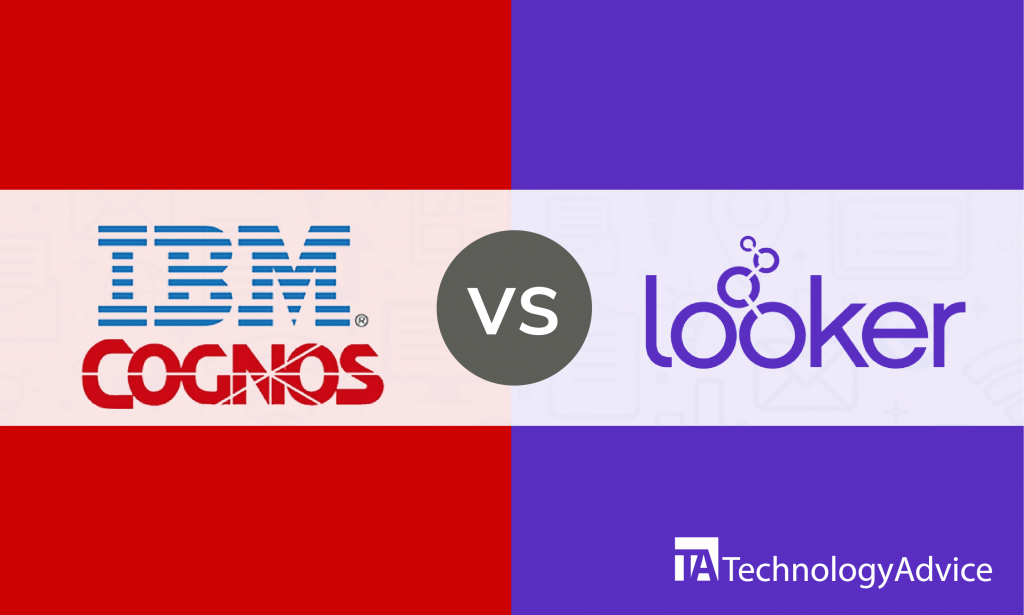When it comes to data solutions, your company deserves the best business intelligence tool. Qlikview and Looker might be the BI tool that will help your company succeed long-term. In this article, we will review and compare the different features of Qlikview vs. Looker and how each feature can help your business.
If you’re ready to skip the research, use our Product Selection Tool to quickly get a list of recommended BI vendors that meet your company’s feature requirements.
Software overview of Qlikview vs. Looker
Qlikview is a business intelligence tool that allows its users to create and process their data using insights gathered by the system. This BI tool can quickly respond to changes while providing valuable insights into your company’s data. With Qlikview, you can uncover important data insights and information across various sources.
Looker is a business intelligence tool that provides innovative data exploration functionalities and data analytics. This software allows you to create accurate reports and data on the go and make it accessible to all parties available. Looker BI can help you produce and optimize your queries with its refined BI programs.
Pros and Cons of Qlikview vs. Looker
At first glance, both software appear to be similar business intelligence tools. But we quickly uncover the individual strengths and weaknesses of Qlikview and Looker, listed below.
Qlikview
Pros
- QlikView gives its users numerous integrations like Salesforce and SAP to build their workspaces.
- QlikView allows you to create personalized and data-driven discoveries.
- It protects and secures your company’s sensitive data to ensure total control of data usage.
Cons
- It has limited features for end-users who are not developers.
- Qlikview’s debugging and reporting capabilities in IDE are limited.
- QlikView lacks keyboard optimizations especially when building objects.
Looker
Pros
- You don’t have to be an experienced data analyst to work with Looker.
- Looker provides a special data scheme where you can drag and drop the desired elements to your report.
- Looker is accessible on any browser as well as mobile devices.
Cons
- Looker can be complicated at times and costly because of maintenance costs.
- Some of their visuals are inadequate and some features like conditional formatting are lacking.
- Caching needs improvement because the system becomes slow and laggy when a large number of queries hit the database.
Similar features for Qlikview vs. Looker
Qlikview and Looker both have amazing data visualization tools that help their users access and interpret data however they want. However, if you look closely at their features, you will see that they both have numerous tools that provide for different solutions. Here are some features both Qlikview and Looker share:
Predictive analytics
Qlikview’s predictive analytics feature provides a next-generation analytics platform powered by an associative engine and powerful augmented intelligence. This feature allows its users to freely explore data on any device using powerful global search and selections. With Qlikview’s predictive analytics feature, you can empower your employees to make bigger and bolder discoveries.
The predictive analytics feature of Looker allows you to process your data model to reflect your company’s unique metrics. With this feature, you can easily deploy your reports from one place to another in any environment. Looker’s predictive analytics feature lets you connect to any database that supports SQL queries and helps you generate accurate reports.
Real time data management
The real time data management feature of Qlikview allows its users to use pre-built, application-specific connectors that help them connect with multiple apps. These apps can help them build their workspaces and process data in real time. With Qlikview’s real time data management, you can gather and combine data from different databases, applications, and spreadsheets to gain extensive insight into your business.
Looker’s real time data management feature can easily manage massive amounts of data and connects it directly to your database. With Looker’s uniquely powerful data platform, every employee can access the centralized store of accurate and customizable data. Data management in Looker can help you accelerate the pace of your data modeling.
Which BI software is better for your business?
Now that you’ve discovered the different features and benefits of Qlikview and Looker, it’s time to choose which of these BI tools works best for your company.
If you’re looking for a business intelligence tool that allows you to process your data model to reflect your company’s unique metrics, then we suggest that you try Looker. With Looker’s predictive analytics feature, you can connect to any database that supports SQL queries and helps you generate accurate reports.
On the other hand, if you’re looking for a BI tool that allows you to build your workspace and process data in real time, then we suggest that you buy Qlikview. With Qlikview’s real time data management feature, you can gather and combine data from different databases, applications, and spreadsheets to gain extensive insight into your business.
Don’t see what you’re looking for? Let us do the heavy lifting. Use our Product Selection Tool for BI software, and we’ll send you a short list of vendors that meet your needs. It’s fast and free.





